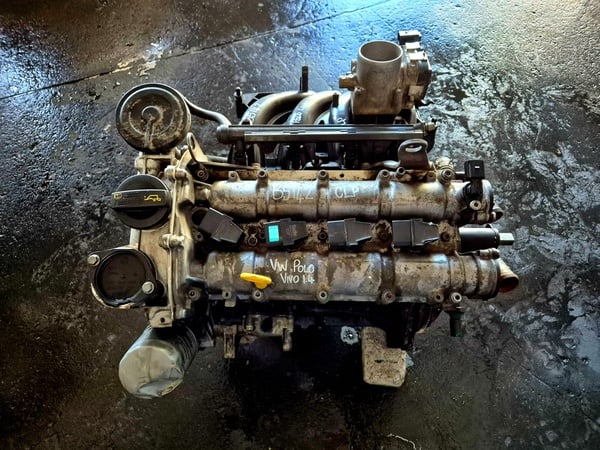The Duty of a Clp Engine in Revolutionizing Engine Efficiency and Sustainability
The advent of CLP engine modern technology offers a turning point in the auto sector, where efficiency and sustainability assemble in extraordinary means. By optimizing combustion procedures and permitting vibrant changes in compression proportions, these engines not only guarantee enhanced gas efficiency and minimized exhausts yet also challenge standard design standards. As the sector faces journalism need for greener services, the ramifications of taking on CLP modern technology expand much beyond mere performance metrics. What remains to be seen is how these technologies will certainly improve the future landscape of auto engineering and ecological responsibility.
Comprehending CLP Engine Innovation
As the automobile industry continually looks for cutting-edge options to enhance efficiency and efficiency, comprehending CLP engine technology becomes essential. The term CLP represents Compression-Low Stress, a sophisticated engine style that focuses on maximizing burning procedures and decreasing emissions. This modern technology operates by keeping a low-pressure atmosphere within the combustion chamber, which helps with a more total fuel melt and reduces unburned hydrocarbons.
Among the crucial features of CLP engine innovation is its ability to readjust the compression ratio dynamically. This flexibility allows the engine to operate successfully across numerous driving conditions, boosting fuel economic climate while concurrently enhancing power result. In addition, CLP engines take advantage of advanced products and design principles to decrease weight and thermal losses, even more adding to overall effectiveness.
Moreover, the integration of electronic control systems plays a crucial role in handling the engine's efficiency parameters. These systems allow real-time modifications to ignition timing and gas injection, enhancing burning for both power and efficiency. By recognizing CLP engine innovation, stakeholders in the auto industry can better value its capacity in driving the future of engine design, performance, and sustainability.
Efficiency Enhancements Offered
CLP engine modern technology delivers significant efficiency enhancements that set it aside from standard engine layouts. Among the primary benefits of CLP engines is their capacity to operate efficiently across a wider variety of rates and lots. This adaptability converts into improved torque delivery and acceleration, providing a much more responsive driving experience.
Furthermore, the sophisticated burning procedure used in CLP engines enhances fuel-air mixing, leading to higher thermal efficiency. This enhancement not just maximizes power output but also minimizes power loss, causing an engine that executes far better under numerous problems.
In addition, the modular style of CLP engines enables much easier combination with crossbreed systems, magnifying their performance capacity - clp engine. This versatility makes it possible for suppliers to design cars that deal with consumer needs without compromising dexterity or power
The accuracy design associated with CLP modern technology also adds to decrease rubbing and wear, enhancing engine long life and minimizing the frequency of upkeep. In general, these efficiency improvements position CLP engines as a leading selection in the quest view it of high-performance, dependable, and versatile engine remedies.
Environmental Benefits of CLP Engines
One of one of the most compelling advantages of CLP engines depends on their environmental advantages, which are increasingly crucial in today's auto landscape. These engines are created to optimize fuel effectiveness, considerably lowering carbon emissions contrasted to conventional burning engines. By making use of sophisticated burning techniques and cutting-edge materials, CLP engines advertise cleaner exhaust results, contributing to boosted air quality.
Furthermore, the decrease in fuel usage not just results in decrease greenhouse gas emissions however additionally saves beneficial natural resources. As fossil gas reserves diminish, the change towards CLP innovation stands for a tactical step in the direction of sustainability. The engines are usually compatible with alternate gas, further improving their environmental allure and permitting a diversified energy portfolio.
Additionally, the light-weight design of CLP engines helps decrease automobile weight, which subsequently lowers the energy required for propulsion. This results in lower operational energy usage and a lessened ecological impact. In recap, CLP engines stand at the center of initiatives to reduce climate change and promote sustainable methods in the automobile industry, embodying a future where performance and environmental responsibility are not equally exclusive.
Contrast With Standard Engines
While conventional engines have long controlled the automobile industry, the intro of CLP innovation presents a substantial shift in performance and performance. Conventional internal burning engines mainly rely upon fuel combustion, which not just limits thermal efficiency yet likewise adds to higher exhausts. In comparison, CLP engines employ advanced thermal see this website monitoring and an one-of-a-kind combustion process, enhancing fuel performance and significantly lowering greenhouse gas exhausts.
Furthermore, standard engines operate on set power curves, which can impede efficiency in varying driving problems. CLP engines, however, are made to adjust their performance dynamically, giving optimal power distribution based on real-time demands. This flexibility results in boosted acceleration, responsiveness, and total driving experience.
Maintenance likewise varies significantly; typical engines commonly require regular oil adjustments and component substitutes due to put on and tear. clp engine. CLP engines, with less moving components, assure decreased upkeep demands and longer functional life-spans

Future Leads and Innovations
As the auto landscape progresses, the future of engine innovation is progressively concentrated on developments that enhance performance and sustainability. The Clp engine, with its unique style and functional effectiveness, is poised to play a pivotal duty in this improvement. Future advancements may entail improvements in materials scientific research, allowing the building of lighter and more sturdy elements, hence lowering general vehicle weight and boosting fuel performance.
Additionally, the integration of expert system and machine discovering into engine monitoring systems is expected to optimize performance dynamically, permitting real-time modifications based upon driving conditions. These innovations can better reduce exhausts and enhance power usage.
In addition, research into different fuels, consisting of hydrogen and biofuels, presents interesting opportunities for Clp engines, lining up performance with eco-friendly efforts. clp engine. As regulative frameworks become more stringent, the fostering of such technologies will be vital in attaining sustainability goals without endangering power
Conclusion
